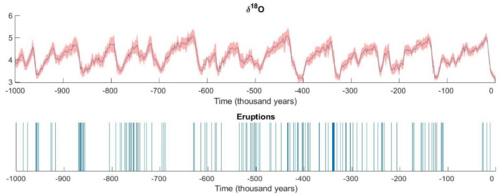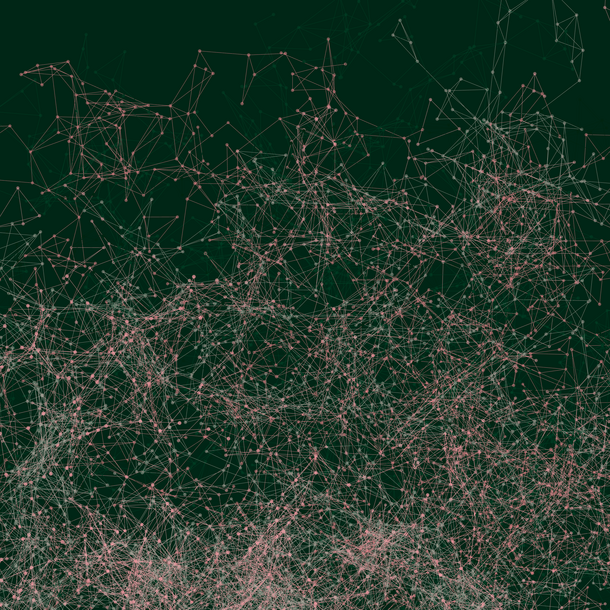Links between volcanism and climate
Doctoral Researcher:
José Kling, GEOMAR and CAU Kiel, jkling@geomar.de
Supervisors:
- Prof. Dr. Mathias Vetter - Kiel University, Department of Mathematics
- Dr. Julie Christin Belo - GEOMAR - Helmholtz Centre for Ocean Research Kiel
Location: Kiel
Disciplines: Statistics, Applied Mathematics, Volcanology
Keywords: Time series analysis, Volcanism, Climate
Motivation
The fact that volcanic eruptions may affect global climate is well established and comes as no surprise. A recent and fascinating discovery from studies of glaciated regions is that changes in climate may affect volcanic activity. Several papers studying glaciated regions have identified an increase in volcanic activity following the last deglaciation (~19-11 thousand years ago), but in order to establish a concrete link between deglaciation and increased volcanic activity, several glacial periods should be considered.
Difficulties in establishing this link comes from 2 factors. The first is the binary nature of the volcanic records (eruption or no eruption), which adds complexity both to correlating this data to real valued climate proxies like as well as to determining periodicities by means of Fourier Analysis, that could be compared to those of the Milankovitch Cycles. The second is the uncertainty inherent to the data, consisting of dating errors and missing events, especially on periods far into the past.
A solid statistical study of the eruption records could not only give us a better understanding of geological processes leading to volcanic eruptions, but also provide tools for better predictions or for building more accurate climate models.
Aims
The goals of this project are twofold.
On the geological side is the creation of appropriate models for our datasets. There are mainly two ways to establish a statistically significant correlation between volcanic activity and climate variations. One is to directly correlate the binary eruption data to the real valued climate proxies, the other is determine if there are periodicities in the data (which has an interest in itself) that match that of the Milankovitch cycles, that are related to the Earth's orbit and play a major role in the global climate.
On the mathematical side is the theoretical treatment of these models and tools. Formal mathematical definition of the model allows rigorous statistical tests for the statistical significance of the results. Also, since we would have a purely mathematical and abstract definition, application in different research areas would be possible.
Refences
- Cooper, Claire L., Swindles, Graeme T., Savov, Ivan P., Schmidt, Anja, Bacon, Karen L., 2018: Evaluating the relationship between climate change and volcanism Earth-Science Reviews 177, 238-247
- Schindlbeck, Julie C., Jegen, Marion, Freundt, Armin, Kutterolf, Steffen, Straub, Susanne M., Mleneck-Vautravers, Maryline J., McManus, Jerry F., 2018: 100- kyr cyclicity in volcanic ash emplacement: evidence from a 1.1 Myr tephra record from the NW Pacific Scientific Reports 8, No. 1
- Ogata, Yosihiko, 1988: Statistical Models for Earthquake Occurrences and Residual Analysis for Point Processes, Journal of the American Statistical Association 83, No. 401, 9-27
- Kutterolf, S., Schindlbeck, J. C., Jegen, M., Freundt, A., Straub, S. M., 2019: Milankovitch frequencies in tephra records at volcanic arcs: The relation of kyr-scale cyclic variations in volcanism to global climate changes, Quaternary Science Reviews 204, 1-16
- Lisiecki, L. E., and Raymo, M. E., 2005: A Pliocene-Pleistocene stack of 57 globally distributed benthic δ18O records, Paleoceanography 20









